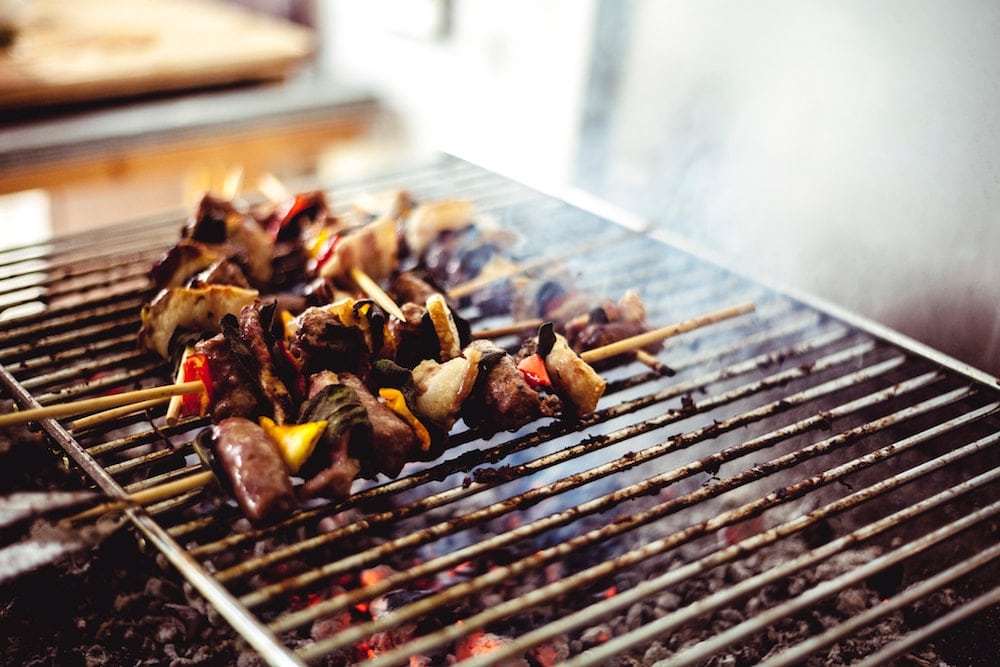Barbecue season is just around the corner, and Americans across the country are cleaning up their grills and getting ready for backyard cookouts. But for a lot of people, it’s time to buy a new charcoal barbecue pit or gas grill or even install a fire pit in the ground.
Are you one of them? Are you sitting on the fence about which type of outdoor cooking setup is right for you, your family and your home?
If so, then you’re in the right place. Below are some of the pros and cons of cooking outdoors with gas, charcoal and wood.
Cooking on a Gas Grill
Cooking with a gas barbecue is a no-brainer for a lot of people. Some will even shell out big bucks for an elaborate gas pit built into a backyard gazebo. The main drawback — and this isn’t really a drawback for everyone — is that gas grills simply cost more than charcoal grills and wood pits.
But there are plenty of positives regarding gas barbecue pits. First of all, controlling the heat is very quick and easy. This gives gas a huge advantage over charcoal and wood. You simply cannot increase or decrease the heat as quickly and accurately with those types as you can with gas.
Also, gas grills give a nice, even heat around your entire cooking area, which makes it easy to finish cooking each item in a predictable order.
Cooking with Charcoal
Cooking with charcoal is a lot cheaper than cooking with gas, and that’s the deciding factor for many backyard chefs. Charcoal pits come in at less than half the cost of their gas-fueled counterparts — sometimes much less than half.
There are some downsides, though. First of all, it can take a lot longer to get your charcoal fire going compared to gas. With gas, you turn on the burner and light a match or click the starter, and you’re basically ready to go. You might need to warm up your grate, depending on how thick it is, but your startup time is minimal with gas. Getting your coals hot is a lot faster if you’re using a chimney, though, so the time difference doesn’t have to be that bad.
One more disadvantage of charcoal fire compared to gas is that there’s usually a lot more cleanup involved. You need to dump your ashes and leftover coals, but first you need to give them ample time to cool off. Some people like to just dump water on them, but then cleanup is 10 times messier.
Cooking Over a Wood Fire
Outdoor cooking with wood is actually a lot of fun. There’s nothing like the crackle of burning firewood as gases are released. There’s just something so primal about starting a fire and roasting slabs of meat all over it.
Woodfire pits are often your cheapest option out there, although your fire pit will usually not have wheels for easy portability. But that’s not an issue when you have sufficient space in the backyard. You’ll also need to buy and store firewood, so that takes up a little more space too.
Speaking of storing your wood, that is actually an advantage for some folks, particularly those living in small homes, condos and apartments in the city. Most fire regulations prohibit multi-unit residents from storing propane, charcoal and starter fluid in their homes, but wood can be safely and legally stored in most cases.
One of the best things about wood cooking is that the smoke can add additional flavor to your food, such as when cooking with hickory or applewood.
Cleanup, as with charcoal, is also a bigger issue, as is the prep time and difficulty in regulating the heat. But few barbecue setups are cheaper than a wood fire pit.
So there you have it — the pros and cons of cooking with gas, charcoal and wood. Each will be appealing to different people, as they all have their advantages and drawbacks.
|



There are no comments yet